Denomination Catholic Name Samuel Ruiz | Ordination 1960 | |
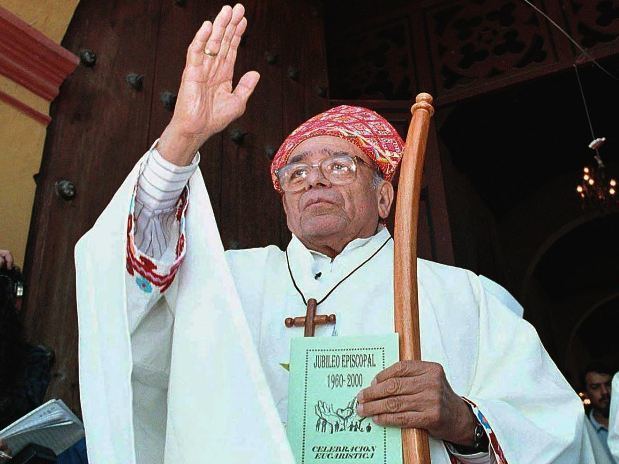 | ||
Born 3 November 1924Guanajuato, Mexico ( 1924-11-03 ) Parents Guadalupe GarciaMaclovio Ruiz Mejia Education Pontifical Gregorian University | ||
Samuel ruiz amarte hasta el final audio ep
Samuel Ruiz García (3 November 1924 – 24 January 2011) was a Mexican Roman Catholic prelate who served as bishop of the Diocese of San Cristóbal de las Casas, Chiapas, from 1959 until 1999. Ruiz is best known for his role as mediator during the conflict between the Zapatista Army of National Liberation (EZLN) and the Institutional Revolutionary Party (PRI), a Mexican political party which had held power for over seventy years, and whose policies were often disadvantageous to the indigenous populations of Chiapas. Inspired by Liberation Theology, which swept through the Roman Catholic Church in Latin America during the 1960s, Ruiz’s diocese helped some hundreds of thousands of indigenous Maya people in Chiapas who were among Mexico’s poorest and marginalized communities.
Contents
- Samuel ruiz amarte hasta el final audio ep
- Programa especial sobre el obispo samuel ruiz garc a en serapaz rompeviento tv 25 1 13
- Early Life and Seminary
- Priesthood
- Vatican II 1962 1965
- Medelln Conference 1968
- Changes in the Diocese of Chiapas in light of Liberation Theology
- Mediation
- EZLN Uprising
- The Military Site
- Identity
- San Andrs Accords
- Resignation
- Death
- Awards
- References
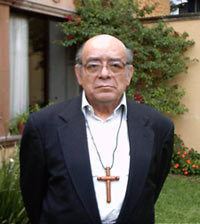
Programa especial sobre el obispo samuel ruiz garc a en serapaz rompeviento tv 25 1 13
Early Life and Seminary
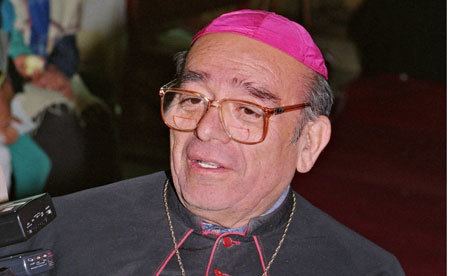
Samuel Ruiz García was the first of five children, born on 3 November 1924 in Guanajuato, Mexico to Guadalupe García, who worked as a maid for upper-class families, and Maclovio Ruiz Mejía, an agricultural worker. Ruiz grew up as a Catholic in a modest family during the Cristero War, a time in which the Church was being persecuted and many were killed or assassinated in Mexico by the anti-Catholic ruling government.
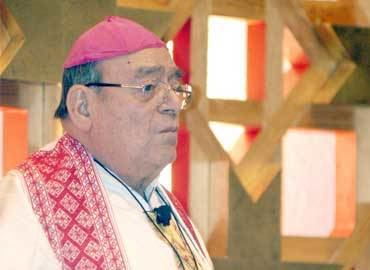
At the age of fifteen, Ruiz completed high school and seminary at León in Guanajuato. He continued his studies at the Gregorian University in Rome, a Jesuit institution where he focused on Sacred Scripture, earning his doctorate in 1952. In 1949 he was ordained to the priesthood.
Priesthood
After receiving his doctorate in philosophy and theology from Gregorian University, Ruiz returned to Guanajuato where he taught at the León seminary. In 1960, Ruiz was consecrated bishop of the Diocese of San Cristóbal de las Casas of Chiapas Mexico, where he remained until he retired in 1999. San Cristóbal de las Cases is made up mostly of the highlands of Chiapas, comprising mostly poor, indigenous communities who speak a variety of Mayan languages.
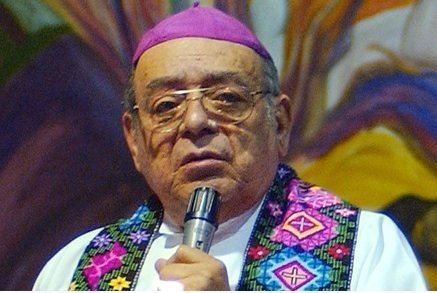
In his early years as bishop, Ruiz subscribed to traditional views of the Church and evangelization. Ruiz’s first pastoral letter acknowledged the dangers of communism developing in Mexico, reading “Behind a creed that flaunts a banner of social justice, communism has been sneaking in falsehoods, hypocrisy, deceit, and calumny….” Original methods of evangelization within the diocese were largely top-down practices that focused on Western methods of social change. Often catechists communicated messages of passivity to the indigenous communities rather than one of consciousness-raising, which was in reaction to reforms being implemented by the government at the time, often in the name of “development” and “civilizing” the Indians.

Not long after arriving in San Cristóbal, Ruiz set out on a mule to tour his diocese, visiting every town and village over which he held jurisdiction. During his travels, he discovered the incredible poverty and marginalization that communities in his diocese were inflicted by, realizing what the true reality was for many indigenous communities in Chiapas. His 1993 pastoral letter reflects this experience, in which Ruiz comments on the actions taken by him and his diocese, admitting that they were culturally destructive and explaining that “We only had our own ethnocentric criteria to judge customs. Without realizing it, we were on the side of those who oppressed the indigenous.” Ruiz began to slowly identify and challenge the structures of oppression, questioning the structure of the government and military, as well as figures within the church that were furthering these systems. He encouraged indigenous communities to take charge of their own lives, and openly voiced that the poor of Chiapas were victims of structural oppression and institutionalized violence. Gradually, Ruiz underwent a series of conversion experiences, leading him to take up the cause of the Mayan indigenous population in his diocese and to develop an inculturated approach to indigenous Catholicism and evangelization.

Ruiz "learned to speak four Mayan languages."
Vatican II (1962-1965)
In 1962, the Second Vatican Council (1962-1965) convened, focusing on the social responsibility of Christians and with goals of opening the Church up for theological development and dialogue. Vatican II encouraged that sermons be translated and read to communities in their local languages and that the Church be more involved in eradicating the social problems occurring in Central and South America. For Ruiz, his participation in the Second Vatican Council allowed for reflection of the decisions and actions carried out under his administration, which brought him a long way from the somewhat naïve enthusiasm which he’d had during his first years as bishop. It was Vatican II which inspired Ruiz to translate scripture into local indigenous languages, and from which his emphasis on inculturation grew.
Medellín Conference (1968)
In 1967, Bishop Ruiz became the president of the Mexican Bishop’s Committee on Indigenous Peoples (CEPI), and in 1968 he was named the president of the Department of Missions of The Conference of Latin American Bishops (CELAM), also called the Medellín Conference. This was a position which he held until 1972 when elections for secretary general chose Archbishop Alfonso López Trujillo, who proceeded to replace progressive department heads, such as Ruiz, with his own conservative allies. Out of this conference, held in Medellín, Colombia in 1968, emerged a consensus that the root of poverty and oppression in Latin America was a systemic problem, one which grew out of the ethic of expansion and development by United States imperialism. Marxist approaches to class analysis, which emphasized that the great conflict between “capital” and “labor” had its origins in the exploitation of workers by “the entrepreneurs following the principle of maximum profit," as well as dependency theory, the idea that the economies of certain countries are conditioned by the development or expansion of another economy to which the former is subjected, converged with the bishops’ growing concern for the poor and disenfranchised. The Catholic Church condemned these ideas as communism, claiming that it undermined the Church’s mission and reduced the Gospel to a purely earthly one. The United States and Latin American governments also responded with threatening hostility. The United States supported Latin American militaries in their methods of assassinating those who subscribed to liberation theology and conducting low-intensity warfare against guerrilla groups.
Changes in the Diocese of Chiapas in light of Liberation Theology
The diocese of San Cristóbal de las Casas (Chiapas), under Samuel Ruiz’s direction, began to redefine evangelization methods and to abandon the traditional approach of Europeanizing indigenous peoples, instead incarnating the gospel in the local culture of each community. Catechists no longer delivered the Word of God to the communities with which they worked, but incorporated the Gospel within the cultural traditions and day-to-day lives of the indigenous. This meant committing themselves to learning the culture and languages of Chiapas, organizing services and discussions in indigenous languages, and inculturating local customs that could be integrated into the Word of God. By doing so, and by translating the Bible into indigenous languages, this work allowed for the poor of San Cristóbal to begin identifying parallels between their own experiences of oppression with those in Biblical passages, most notably the Exodus. Rather than focusing only on the religious affairs that they had once been restricted to, catechists began fostering discussion of economic and political matters that impacted people’s daily lives. Passivity was replaced by these new methods of catechists and the development of base communities, which built the framework for reflection and collective action. Indigenous poor no longer accepted the “low wages they earned on plantations, the lack of security in their land titles, the corruption of government agencies, and the abuses of merchants and landowners”, instead using “their religious faith and interpretation of the Bible to create concrete solutions to immediate problems.”
In 1989, Bishop Ruiz founded the Fray Bartolomé de Las Casas Rights Center to push back against increasing violence against indigenous and campesino activists in his diocese.
Mediation
This theology of liberation, however, appeared threatening to government structures and those with political and economic power, and in some cases oppression of rural and urban poor in Mexico and other areas of Latin America grew worse. Areas which practiced these new ways of interpreting the Bible and encouraged the poor to fight for their human rights were labeled Marxists, and often under government orders, para-militaries conducted counter-insurgent campaigns using low-intensity warfare to target civilians who supported these resistance movements. The indigenous started to realize that the cause of their poverty was their lack of freedom and democracy, a repression that grew out of the policies of the Partido Revolucionario Institucional (PRI) government.
EZLN Uprising
On 1 January 1994, the date that NAFTA came into effect, a group of several hundred indigenous guerrillas occupied several transit routes and government offices in San Cristóbal de las Casas and other cities in the highlands. These occupations, a response to increased marginalization of Indians at the hands of their government, were carried out under the name of the previously unheard of Zapatista Army of National Liberation (EZLN), a name inspired by Emiliano Zapata, a leading figure during the Mexican Revolution who stood as a powerful symbol of equity and social justice that the men and women of Mexico’s rural south demanded of their government. The Mexican government, who for years had silenced protests in Chiapas in order to create the political and economic conditions needed to ensure its admission into NAFTA, was outraged and blamed Ruiz’s pastoral practices and consciousness raising techniques as one of the roots of the Zapatista Uprising. The PRI, which had held monopolized power for nearly 70 years, attempted to respond to the uprisings with military pressure by implementing strategies of low-intensity warfare to terrorize the civilian population that supported the Zapatistas.
Mediation
Reflecting on these events, Bishop Ruiz later explained that “It became clear that the diocese could not be absent from the situation. Our job was neither to represent the Zapatistas to the government nor to represent the government to the Zapatistas, but rather to offer a mediation in which there could be mutual confidence in talks.” The Zapatista Army of National Liberation (EZLN) attracted national and international attention as negotiations with government authorities were underway, for which Ruiz was elected mediator and during which the guerrillas demanded not only constitutional recognition, but reformation of the state and systemic structures which were the root of their oppression.
The Military Site
Once Subcomandante Marcos was identified as Rafael Guillén, on 9 February 1995, in a counterproductive turn of events, the President Ernesto Zedillo made a series of decisions that completely broke with the strategy and action plan previously defined and the agreements he authorized his Secretary of Interior Lic Esteban Moctezuma to compromise with Marcos just 3 days before in Guadalupe Tepeyac. Zedillo sent the Mexican army to capture or annihilate Marcos without consulting his Secretary of Interior, without knowing exactly who Marcos was, and only with the PGR single presumption that Marcos was a dangerous guerrilla. Despite these circumstances, President Ernesto Zedillo decided to launch a military offence to capture or annihilate Marcos.» Arrest warants were made against Marcos, Javier Elorriaga Berdegue, Silvia Fernández Hernández, Jorge Santiago, Fernando Yanez, German Vicente, Jorge Santiago and other Zapatistas. At the Lacandon Jungle, the Zapatista Army of National Liberation was then under the Mexican Army military siege. The PGR was after them. Javier Elorriaga got captured on February 9, 1995, in a military garrizon at Gabina Velázquez that is in the Las Margaritas town and later taken to the Cerro Hueco prison in Tuxtla Gutiérrez Chiapas. » On February 11, 1995 the PGR informed that they made an operative in the State of Mexico, where they capture 14 persons presumed to be involved with the Zapatistas of which 8 all ready being turned to the Judicial Authorities and sized an important arsenal. » The PGR repressive acts got to the extreme of pressuring the San Cristóbal de Las Casas, Chiapas Catholic Bishop, Samuel Ruiz García of arresting him for aiding to conceal the Zapatistas guerrilla activity. Even though this activity was public years before the uprising in Proceso (magazine) among Mexico most important magazines and it was the Mexican Government who was for years trying to disguise it. » » » And with no consideration to the political consequences of with no legal reason hurting, the all ready seriously damaged, recently restored Mexico Vatican Diplomatic relations » because of the May 24, 1993 political assassination of a Prince of the Catholic Church, the Guadalajara, Mexico Cardinal Juan Jesús Posadas Ocampo that precisely that Agency the PGR has left it unresolved.
Marcos resolve was put to the test, when the Zapatista Army of National Liberation was then under the Mexican Army military siege In their camp and at the Lacandon Jungle. Marcos response was immediate, sending Esteban Moctezuma the following message: "See you in hell". Conflicting signals got strengthened in favor of a fast military solution. The facts seemed to confirm Manuel Camacho Solis June 16, 1994 accusations that the reason for his resignation as the Chiapas Peace Commissioner, was due to sabotage done by the then presidential candidate Ernesto Zedillo.
Under the big political pressure of a highly radicalized situation Mexico Secretary of the Interior Lic. Esteban Moctezuma believed a peaceful solution was possible, he champion to reach a peacefully negotiated solution to the 1995 Zapatista Crisis betting it all on a creative strategy to reestablish the Mexican Government Zapatista Army of National Liberation dialog to search for peace by demonstrating Marcos natural peace vocation and the terrible consequences of a military solution. Making a strong position against the February 9 actions against Peace, Secretary of the Interior Esteban Moctezuma defender of a political solution, to the 1995 Zapatista Crisis to submit his resignation to the President Ernesto Zedillo which he does not accept it and asks the Secretary of the Interior Esteban Moctezuma to try the improbable task of restoring the Conditions for dialog to reach a negotiation. For these foregoing reasons the Mexican army, ease actions, giving an opportunity that Marcos capitalized to escape the military site emplaced in the Lacandon Jungle. » Faced with this situation, Max Appedole, Rafael Guillén, childhood friend and colleague, at the Jesuits College Instituto Cultural Tampico asked for help from Edén Pastora the legendary Nicaraguan "Commander Zero" to prepare a report for under-Secretary of the Interior Luis Maldonado Venegas; the Secretary of the Interior Esteban Moctezuma and the President Ernesto Zedillo about Marcos natural pacifist vocation and the terrible consequences of a tragic outcome. » The document concluded that the marginalized groups and the radical left that exist in México, have been vented with the Zapatistas movement, while Marcos maintains an open negotiating track. Eliminate Marcos and his social containment work will not only would cease, but will give opportunity to the radical groups to take control of the movement. They will response to violence with violence. They would begin the terrorist bombings, kidnappings and belligerent activities. The country would be in a very dangerous spiral, which could lead to very serious situations because not only there is discomfort in Chiapas, but in many places in Mexico.»
Identity
During the investigative stage to identify Subcomandante Marcos, the Mexican government speculated that he was a dangerous guerrilla fighter. This theory gained much traction At the end of 1994, after the dissident Zapatista Comandante Salvador Morales Garibay give away the identity of his former fellow Zapatistas to the Mexican government, among them Marcos identity. » They all were indicted for terrorism, warrants were issued arrest where made in a military action. The Mexican government alleges some Zapatistas to be terrorists, among them Marcos. » There was a storm of political pressures claiming for a fast military solution to the 1995 Zapatista Crisis. On February 9, 1995, in a televised special Presidential broadcast, President Ernesto Zedillo announced Subcomandante Marcos to be one Rafael Sebastián Guillén Vicente, born June 19, 1957 in Tampico, Tamaulipas to Spanish immigrants. An Universidad Autónoma Metropolitana School of Sciences and Arts for the Design former Professor. And after the government revealed Marcos identity in January 1995, when Rafael Guillén, old friend, classmate with the Jesuits at the Instituto Cultural Tampico, direct intervention in the conflict, Max Appedole played a major role with the Mexican government to avoid a military solution to the 1995 Zapatista Crisis. By demonstrating that contrary to the accusations announced by President Ernesto Zedillo, » Rafael Guillén, was no terrorist. Max Appedole recognized his literary style in all Marcos manifestos that where published in the media, linked them to their literary tournaments organized by the Jesuits in which they competed in Mexico. Confirming that he had no doubt that Marcos was his friend Rafael Guillén, a pacifist. » » » »pastp
San Andrés Accords
National and international support of the Zapatistas’ demands increased and in 1996 the San Andrés Accords were signed by the EZLN and the federal government. This committed the parties to basic respect for the diversity of the indigenous population of Chiapas, granted the right to participation in determining their development plans, control over administrative and judicial affairs, and self-government. However, the proposal for the implementation of these conditions was accepted by EZLN, but refused by President Zedillo. Time showed that the fight against a military solution to the conflict and the strategy to achieve a peaceful solution to the 1995 Zapatista Crisis. was legal, politically and honorably correct, saving many lives in Mexico.
Resignation
In 1998, Bishop Samuel Ruiz resigned from his position as peace mediator, accusing the government of “simulating” a peace process, and the committee disbanded. Ruiz continued to act as a protector and supporter of Chiapas and to advocate for human rights for the indigenous until his death in 2011. Following his resignation, he was succeeded by Bishop Felipe Arizmendi Esquivel, a socially progressive supporter.
Death
On January 24, 2011, at the age of 86, Samuel Ruiz García died at Hospital Ángeles del Pedregal in Mexico City, the causes of which was determined to be respiratory failure and other complications, including high blood pressure and diabetes. During the Mass in Mexico City which commemorated Don Samuel, other bishops described Ruiz as “a person whose actions were discussed and condemned by a section of society, but for the poor and for those who worked with him, Don Samuel was a bright light.”
Awards
In 1996, Samuel Ruiz received the Pacem in Terris Peace and Freedom Award for his fight against injustice and institutionalized violence inflicted against the poor and oppressed of his diocese of San Cristóbal de las Casas.
In 1997, Ruiz received the Martin Ennals Award for Human Rights Defenders.
Samuel Ruiz was awarded the Simon Bolivar International Prize by UNESCO in 2000 for his work to defend the indigenous peoples of Chiapas, his role as mediator between the government and the Zapatista Army of National Liberation, and for his commitment to the promotion of human rights and social justice for Latin America peoples.
Samuel Ruiz was also nominated for the Nobel Peace Prize in 1994, 1995, and 1996 by, among others, Rigoberta Menchú and Adolfo Pérez Esquivel.
